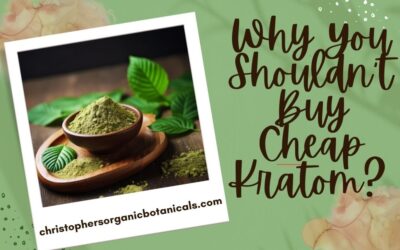What is Water soluble kratom?
Water-soluble kratom is a form of kratom product that dissolves easily in water or other liquids. These mixes simplify the consumption of kratom in liquid form. This is especially beneficial for individuals who dislike capsules or powder.
Water-soluble kratom is created by breaking down kratom powder or extract into smaller particles or molecules. These smaller particles or molecules can easily dissolve in water. This allows for easier mixing and absorption when the product is added to a liquid.
Some potential benefits of water-soluble kratom drink mixes include:
- Convenience: Water-soluble kratom mixes offer a simple and convenient method of consuming kratom. They eliminate the need for measuring out powder or dealing with capsules, making it easier to incorporate kratom into your routine.
- Faster onset of effects: When kratom is in a water-soluble form, it can be absorbed more quickly by the body compared to traditional powder or capsules. This may lead to faster onset of effects, providing a more immediate experience.
- Customizable dosing: Water-soluble kratom drink mixes often come with measuring tools, allowing users to adjust their dosage according to their preferences. This can be particularly helpful for individuals who desire precise control over their kratom intake.
- Variety of flavors: Some water-soluble kratom mixes are available in various flavors, which can help mask the natural taste of kratom, which some people find bitter or unpleasant. These flavor options provide a more palatable experience for those who prefer a more enjoyable drinking experience.
The effects of water-soluble kratom drink mixes vary based on the strain, dosage, tolerance, and metabolism of the individual. Start with a small amount of kratom and pay attention to how your body reacts before taking more.
When buying kratom drink mixes, make sure to get them from trusted sources that follow good manufacturing practices. Read instructions, follow dosages, consult healthcare professional if concerned or have questions.
Is CBD & Kratom Water Soluble?
Majority of plant derived medicinal molecules are water insoluble. It has a purpose to defend life. Where this plant derived medicinal molecules are beneficial to life, it can be dangerous when consumed in excess.
Majority of these plant-based herbs are NOT water soluble and hence not absorbed easily into the blood stream. water and oil do not mix!
In order for a certain compound to be effective, it must be able to be absorbed by the body. Bioavailability, the body’s ability to absorb a supplement, is essential to producing results that can be confirmed.
Yes, Cbd and Kratom both have properties that can be manufactured into water soluble formulations. Cbd and Kratom both have been popular in recent years.
Bioavailability is a measure of how much a substance can access the circulation and reach its target area. It is determined by absorption and secretion. Absorption is how much we get in, while secretion is how much we get out.
What is Kratom bioavailability?
Kratom’s effectiveness can differ based on how it is taken, a person’s metabolism, and the specific product used. Kratom is usually taken by mouth, either as powder or capsules. It is absorbed in the stomach and processed by the liver.
The bioavailability of orally ingested kratom is estimated to be around 25% to 30%. This means that approximately 25% to 30% of the active compounds present in kratom reach systemic circulation and are available to exert their effects in the body. The remaining percentage is subject to metabolism and elimination processes.
It’s important to note that the bioavailability of kratom can be influenced by the following factors:
- Quality and potency of the product: The quality of kratom and its alkaloid content can vary, which may affect its bioavailability. Higher-quality kratom products with a higher concentration of alkaloids may have greater bioavailability compared to lower-quality products.
- Individual differences: Each person’s metabolism and physiology can vary, which can impact how kratom is absorbed, distributed, metabolized, and eliminated in their body. Factors such as body composition, liver function, and overall health can influence bioavailability.
- Tolerance and dosage: Long-term and frequent kratom use can potentially lead to the development of tolerance, requiring higher doses to achieve the desired effects. However, higher doses may not necessarily result in proportionally higher bioavailability.
It’s worth noting that there are alternative methods of administration that can potentially alter kratom’s bioavailability. For example, some individuals may use kratom extracts or tinctures sublingually (under the tongue), which allows for faster absorption through the mucous membranes. However, the bioavailability of these alternative routes of administration has not been extensively studied or quantified.
Understanding the bioavailability of kratom can help individuals make informed decisions about their dosage, frequency of use, and desired effects. It’s important to approach kratom use responsibly and consult with a healthcare professional if you have any concerns or questions regarding kratom’s effects or its interaction with your body.
Nutrition experts are cognizant of the significance of how well substances can be taken up and utilized by the body. For instance, when consuming food, it is processed by the digestive system and the beneficial nutrients are taken up into the bloodstream, where they can be stored or used by the cells.
Although carbohydrates and fats are easily absorbed by the body, it can sometimes be difficult for it to process the beneficial micronutrients that are usually taken in supplement form – such as vitamins, minerals, flavonoids, and carotenoids.
Nutritionists understand bioavailability’s value. Food ingested is digested, with beneficial nutrients absorbed into the bloodstream, either saved or utilized by cells. Unfortunately, due to inefficiency, not all nutrient molecules are absorbed; some destroyed in the stomach/intestines, excreted, or not taken in.
When consuming food, useful nutrients are taken into the body, some stored and some used. Inefficiency means not all nutrients are absorbed, some destroyed, some excreted, some not entering cells. Carbs and fats are highly bioavailable, yet micronutrients (vitamins, minerals, etc.) can be harder for the body to absorb.
The science behind how these plants work in our bodies is the key to understanding how we can properly utilized these plants in our lives.
The human body is 60% water (60% in Men and 55% in Women), and as you know, mixing oil and water does not work well.
Bioavailability
Bioavailability refers to the extent and rate at which a substance, such as a drug or nutrient, is absorbed and becomes available to exert its effects in the body. It is a measure of how much of the administered dose reaches the systemic circulation, where it can interact with target receptors or tissues.
When a substance is administered through various routes, such as oral ingestion, inhalation, injection, or topical application, its bioavailability can vary significantly. Factors that influence bioavailability include absorption, distribution, metabolism, and elimination processes within the body.
The bioavailability of a substance is often expressed as a percentage, representing the fraction of the administered dose that reaches systemic circulation unchanged. For example, if a drug has a bioavailability of 80%, it means that 80% of the administered dose is available to produce the desired effects.
Several factors can affect the bioavailability of a substance, including:
- Route of administration: Different routes of administration have varying absorption rates and efficiency. For example, intravenous administration provides the highest bioavailability since the substance is directly introduced into the bloodstream. Oral administration, on the other hand, can be influenced by factors such as gastrointestinal absorption and first-pass metabolism in the liver.
- Chemical properties: The molecular characteristics of a substance can influence its ability to be absorbed and distributed within the body. Factors such as solubility, stability, and molecular size can affect its bioavailability.
- Metabolism and excretion: Metabolism, which occurs primarily in the liver, can modify the structure and activity of a substance. Metabolized substances may have reduced bioavailability due to the formation of inactive metabolites or increased bioavailability if active metabolites are produced. Excretion processes, such as renal elimination, can also affect the overall bioavailability.
Understanding the bioavailability of a substance is important for determining appropriate dosages, optimizing drug formulations, and predicting its efficacy and potential side effects. It helps healthcare professionals and researchers make informed decisions regarding the administration and utilization of substances in the body.
In order for a substance to be effective, it must be able to be absorbed by the body, making bioavailability the most important factor in creating an impactful supplement.
This measure assesses how much of the substance is able to reach the desired destination and is based on how much is absorbed and how much is secreted.
Nutritional scientists understand the significance of bioavailability, as it is the process through which food is taken into the digestive system and useful nutrients are then absorbed into the bloodstream for either storage or use by the cells.
The effectiveness of a supplement depends on its bioavailability. Bioavailability is how well a substance can be taken into the body. Therefore, it is essential to ensure a high bioavailability for a supplement to be useful.
That means you may only absorb about 10% of an oil-based product.(Kratom derived medicinal molecules). In other words, you may not enjoy the potency you expect.
Not only that if you use excess, but it may also settle in healthy cells as foreign material.
Read More about water soluble molecules and the importance of bioavailability.
Water-soluble Kratom is simply more compatible with the makeup of the human body. In pharmacological terms, water-soluble Kratom is more effective because it promotes greater bioavailability.
Water soluble Vitamins have been studied for awhile now, and the research is promising.
Lab tested Kratom powder is reduced from 1000 grams to 100 grams of a water-soluble powder. This powder is then utilized in kratom formulations. This may be looked at as a kratom extract, which it technically is, but more of a purified water soluble kratom.
The colors of kratom do not really come into play since those characteristics have been removed. Green Vein, Red Vein and White Vein do not matter.
Purified kratom
Purified water soluble kratom will work traditionally more like a red vein kratom strain. These products have more of a relaxing effect and do not have the energy of traditional kratom. Relief is achieved without the added side effects.
The mechanism that defines bioavailability centers on how our bodies absorb the substances we ingest. In this case, bioavailability focuses on how much of a substance enters the circulatory system.
When you ingest products, the amount of Kratom that enters your bloodstream depends on how well it is absorbed. While water is readily absorbed, fats and oils must first be broken down by bile and then metabolized by the liver.
This means oils take longer to digest and only a small fraction of the Kratom ever reaches your bloodstream. With oil you must take a much higher serving to enjoy the same outcome as water-soluble Kratom products.
Water soluble Kratom product reaches in circulation much faster and cleared from body much faster after doing its job.
In other words, “water soluble kratom is more effective” Stay tuned for more information about purified water soluble kratom products.
Conclusion
We will be introducing these products in 2023 and we are excited to work with a team that is on the forefront of science! Buy kratom online from Christopher’s Organic Botanicals. Mitragyna speciosa kratom leaves are our speciality!






0 Comments